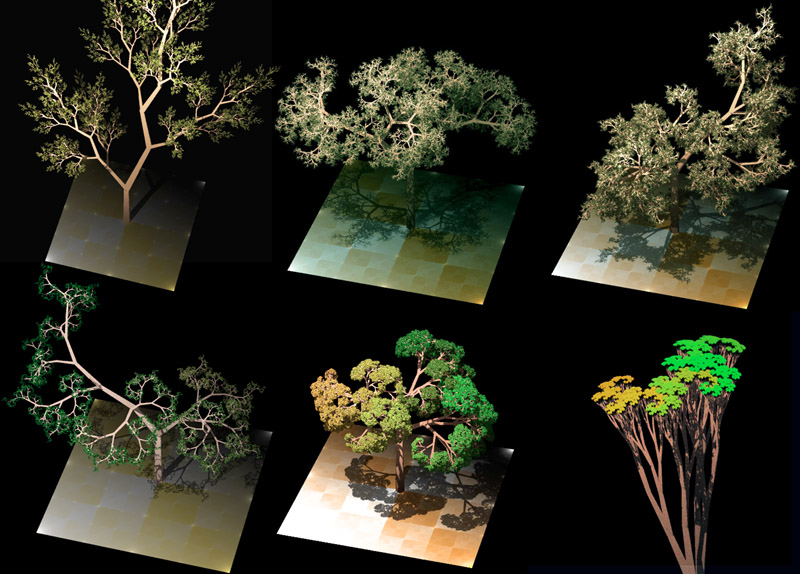Academic Papers For Procedural Generation Tools (9/13/2020)

For this week, I went on Google Scholar to compile papers regarding my research topic.
Access most recent webbuild here: Click Link
Quick Skimming
To start off, I identified over 20 papers which could give me more insight in the research done on Procedural Generation Tools in game development:
- Expressive Design Tools: Procedural Content Generation for Game Designers
- A case study of expressively constrainable level design automation tools for a puzzle game
- Mixed-initiative procedural generation of dungeons using game design patterns
- Procedural Natural Systems for Game Level Design
- Tanagra: a mixed-initiative level design tool
- Autonomous Tools in System Design: Reflective Practice in Ubisofts Ghost Recon Wildlands Project
- Procedural content generation for games: A survey
- Hierarchical dungeon procedural generation and optimal path finding based on user input
- Procedural Generation of 3D Caves for Games on the GPU
- Cellular automata for real-time generation of infinite cave levels
- Towards a Generic Framework for Automated Video Game Level Creation
- Automating Game Design In Three Dimensions
- A mixed-initiative tool for designing level progressions in games
- Future Trends in Game Authoring Tools****
- Intentional computational level design****
- Towards Automated Game Design****
- Rule-based procedural terrain generation **** This is a patent. Thanks Google Scholar :^)
- Procedural generation of story-driven maps****
- Adventures in level design: generating missions and spaces for action adventure games****
- Level design as model transformation: a strategy for automated content generation****
- Developing Procedural Generation Tools for Video Game Audio Designers**** Focused on Audio moreso than level/general design.
- An approach to level design using procedural content generation and difficulty curves**** More focused on tuning procedural generation
- Stereoscopy-based procedural generation of virtual environments**** Too specific
- Tools for Procedural Generation of Plants in Virtual Scenes**** Might be too specific
Paper Summaries
Out of the 24 papers I selected, I filtered out 11 that did not seem important to my topic: automating level design with procedural generation. Below, I have selected 3 papers to skim more closely and summaries.
Automating Game Design In Three Dimensions
With careful design, procedural generation tools can build complete games from scratch,
with little input from the actual developer. ANGELINA-5 is a framework developed by
Michael Cook et. al. that can automatically design and build 3D games.
The tool employs computation evolution, a family of algorithms inspired by biological evolution and artificial intelligence.
Overall, there are 4 core evoluionary processes which ANGELINA-5 is built upon:
- Level Design: forming the basic layout of the game world.
- Zoning: visual and aural astetics of regions in the game world.
- Placement: The start position of the player, entites as well as the position of the level exit.
- Ruleset: The behaviors that govern what each entity is allowed to do in the game world.
Autonomous Tools in System Design: Reflective Practice in Ubisoft’s Ghost Recon Wildlands Project
Autonomous (procedural generated) Tools can allow for game designers to generate complex assets for games which would be nearly impossible for someone to do by hand.
These tools utilize many systems under the hood, such as AI, machine learning, and evolutionary algorithms. However, these tools need to be
carefully developed so that designers can best benefit from them. The paper defines 3 major requirements for any autonomous tool:
- Scale: Be highly scalable (take on more complex assignments) as a designer's tasks grow in size and complexity.
- Iteration: The tool must allow for a designer to quickly experiment with alternate versions of the game, and permit them to test different combinations of game elements
- Creativity: Tools empower creativity by automating repetitive tasks, allowing designers to focus on tasks which require genuine human judgment.
Tanagra: A Mixed-Initiative Level Design Tool
Tangra is a prototype design tool built for creating 2D platformers. It is a mixed-initiative tool: the designers can place general constraints on a level generation, and the tool can fill in the rest of the geometry. Tangra guarantees that the levels it creates are playable by organizing geometry features in what is called "beats". Each beat will contain geometry and entity placements to add gameplay to the level. When combining the beats,
the tool uses AI to check their placements against constraints specified by the user, as well as ensuring that the end of one beat can be attached to the start of another. Overall, the tool's mixed-initiative approach is ideal for level designers; it gives them enough features to build and augment their levels without the system overriding their changes.
